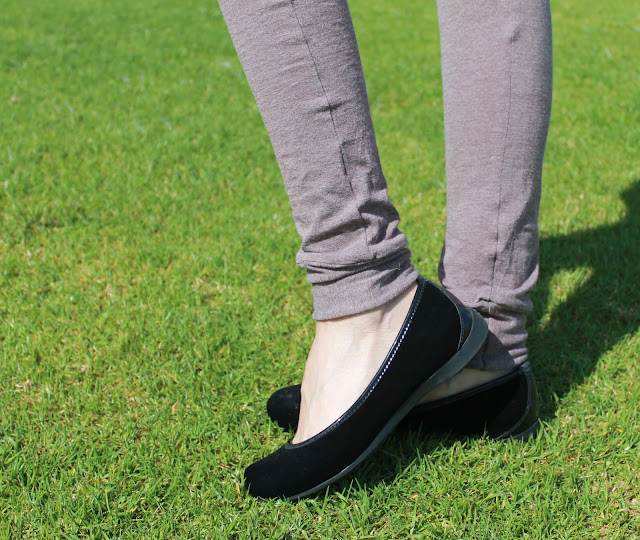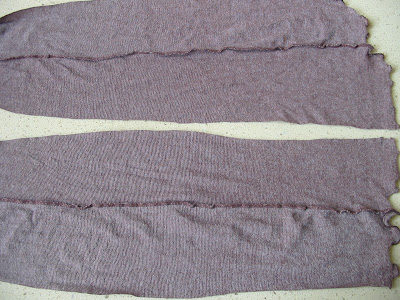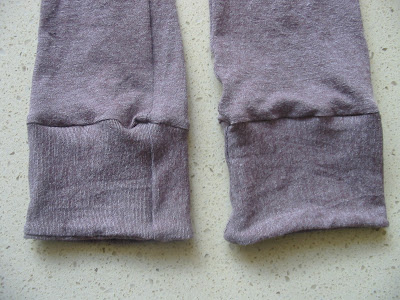For my birthday this year, my sister gave me a book I had been coveting for some time - Drape Drape 2 by Hisako Sato. It's a Japanese pattern book featuring some interesting and unique, but wearable, clothes. I really like the clean look of many Japanese designs and this book provides traceable patterns and basic instructions on how to create some yourself.
It was difficult to decide what to make first as my mouth was watering as soon as I opened the cover. However, I eventually settled on Pattern No. 2, the one-piece side drape top, which is actually more of a tunic, or even a dress, than a top. Amazingly, it is cut from a single piece of knit fabric and is actually very quick to sew together as it only requires a couple of seams, neck and armhole binding and a hem.
 I decided on this pattern, partly because I had an op-shopped maxi skirt that was just big enough to make this from. The skirt was made from a very stretchy, two-way stretch knit. Here it is before I chopped into it.
I decided on this pattern, partly because I had an op-shopped maxi skirt that was just big enough to make this from. The skirt was made from a very stretchy, two-way stretch knit. Here it is before I chopped into it.I cut one skirt side seam completely open and just managed to squeeze the pattern on to the opened-out fabric. I placed the middle of the No. 2 top pattern, which forms the seam-free right hand side of the top, over the intact skirt side seam. I wasn't able to place the pattern grain line marking on the fabric grain as there wasn't enough fabric, but this doesn't seem to have affected the finished top/dress, perhaps because the fabric was so stretchy. Part of the dress hem had to be cut from the waistband of the skirt, so the stripes go in the other direction in this small section. As it turns out, I quite like this little feature!
The photo below shows the right hand side of the top, which is actually the original skirt side seam. You can also see the little inset piece which was originally the skirt waistband. That's my label inserted into the side seam.
I was worried that this 'top' would be too short to wear as a dress as I am about 5'9 tall. However, it seems to have turned out longer than it looked in the book picture and I'm very happy with the length. Again, this may be because my very stretchy fabric was cut off-grain, although it doesn't appear to be pulling downwards at all.
The neckline and armholes are finished with a strip of knit fabric folded over the edges like bias binding.
You may remember my recent struggle with the kakurenbo pattern from Pattern Magic, another Japanese pattern book. If I had to make a comparison of these two books, based on making one pattern from each book (which I know is completely unscientific, but still interesting right?), I would have to say that Drape Drape 2 is definitely the book to start with. A sewist with some experience, particularly with knit fabric as most patterns in this book require knits, could have an enjoyable Sunday tracing, cutting out, sewing and finishing a garment from Drape Drape 2 (probably also Drape Drape, but I haven't actually seen the first book). This is not to criticise Pattern Magic as it contains some really incredible designs. However, at least for the pattern I made, these pose a far greater challenge to make as they require fiddly pattern drafting (no patterns are provided) and much more complex sewing techniques to put together. The time taken to make my Pattern Magic top was closer to a month of Sundays! OK not quite, but you do need plenty of time, experience and patience to tackle Pattern Magic.
What do you think? Has anyone else tried these two books?

















































